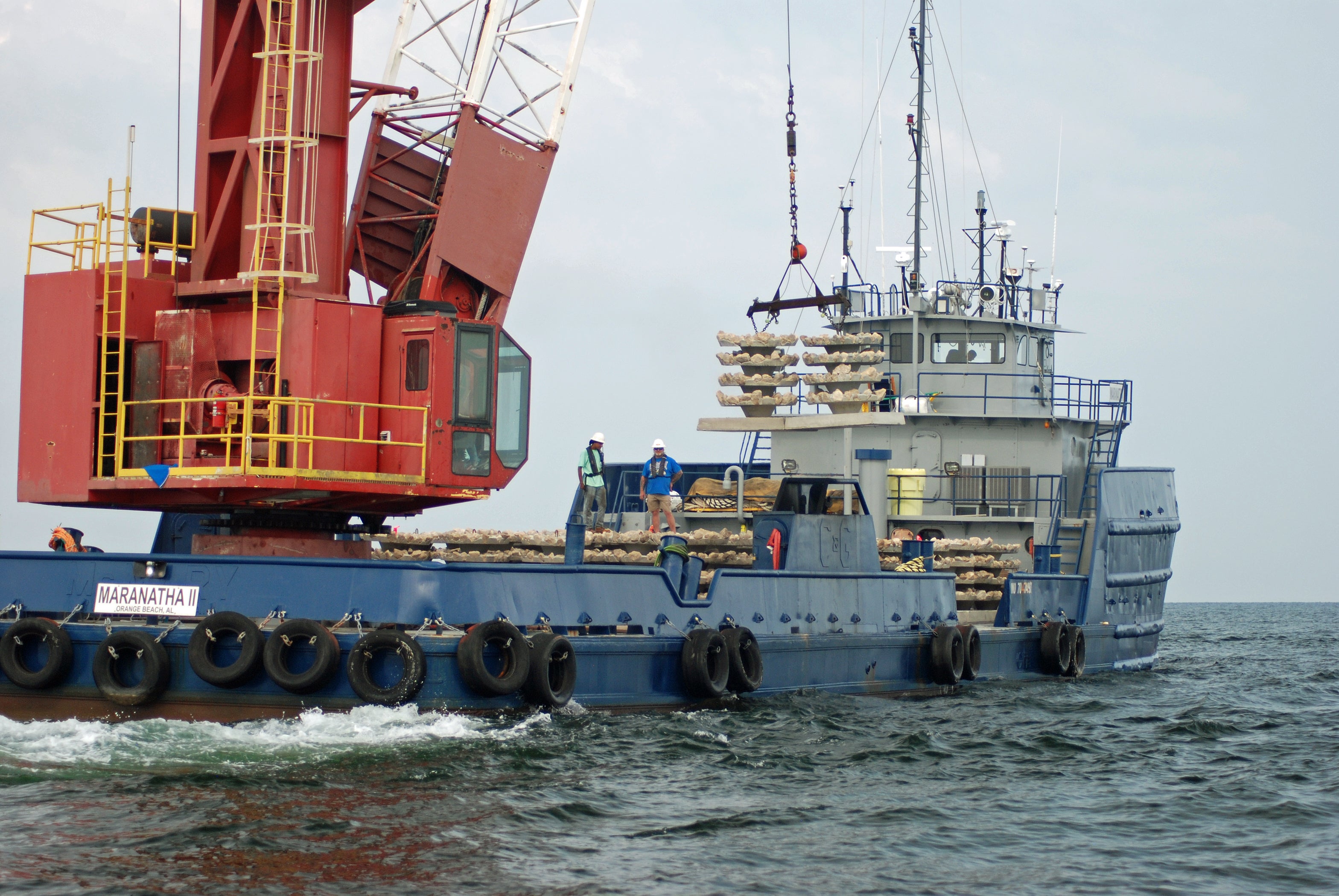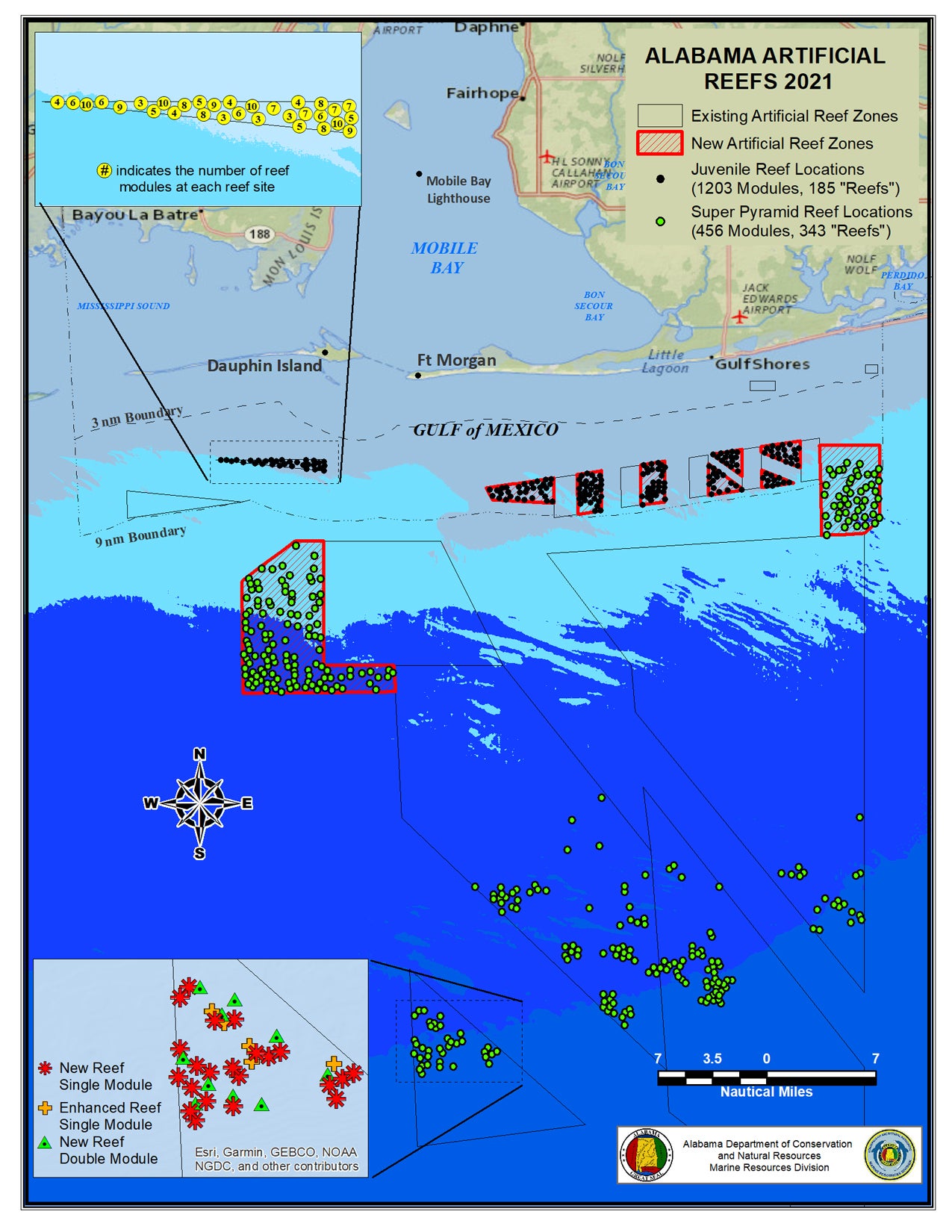By DAVID RAINER, Alabama Department of Conservation and Natural Resources
Already the largest in the nation if not the world, Alabama’s artificial reef zones recently got even larger with the addition of 110 square miles of Gulf of Mexico bottom.
As part of an overall $8.135 million expansion of the Alabama Artificial Reef Program, the Alabama Department of Conservation and Natural Resources, Marine Resources Division (MRD) recently received authorization of two additional permit areas from the U.S. Army Corps of Engineers.
Craig Newton, MRD’s Artificial Reef Coordinator, said the grants from the National Fish and Wildlife Foundation’s Gulf Environmental Benefit Fund, established with criminal fines after the Deepwater Horizon Oil Spill, will also allow MRD to deploy artificial reefs in both nearshore and offshore reef zones.
“We have expanded the 6- to 9-mile reef zone,” Newton said. “Originally, we had about 30 square miles in that reef zone. We’re expanding by 23 square miles near Gulf Shores and Fort Morgan and another 24-square-mile area offshore of Orange Beach that is between 8 and 15 miles offshore.”
The largest of the new reef zones is between 13 and 25 miles south of Dauphin Island and adds 63 square miles for the 110-square-mile total of new water bottom for constructing artificial reefs.
The approval of the new zones was a lengthy, comprehensive process to ensure historical resources and artifacts were not impacted by the new reef zones. The cost associated with the permitting process was $742,000.
“We had to do bottom surveys that were required by the National Historical Preservation Act to ensure that cultural resources are not compromised,” Newton said. “These cultural resources could be shipwrecks, Civil War artifacts and areas that early inhabitants used as campsites or mounds thousands of years ago.
“During eras of sea level transgressions, water bottoms near the Alabama coast would have been exposed. The sub-bottom profiler (scanning equipment) data actually identifies natural levees of bayous, rivers and creek banks where early inhabitants would have made campsites and used for hunting grounds thousands of years ago.
“The surveys identified a handful of areas we have to avoid, but generally didn’t find anything of cultural significance. Ultimately, it resulted in 110 square miles of water bottom being authorized by the Corps of Engineers.”
With permits in hand and contracts executed, MRD started deploying artificial reefs in the new reef zones on July 30, 2021.
Newton said in the 6- to 9-mile reef zones a total of 1,203 juvenile reef fish shelters will be deployed at numerous locations with 3 to 10 shelters per reef site as part of a $2.4 million contract. The modules are 4.5-foot-diameter concrete discs placed on a pedestal and embedded in a concrete slab. Each module will have four discs.
“Our monitoring and research have shown that these type modules are extremely effective for providing habitat for juvenile reef fish, particularly gray triggerfish,” he said. “Young red snapper, gray snapper and lane snapper will also use these structures. Since we have been deploying a significant amount of adult-size reef structures, we felt that adding these juvenile structures will help facilitate the recruitment of juveniles to the larger reefs farther offshore. It increases the juvenile reef fish habitat that we have offshore of Alabama.”








